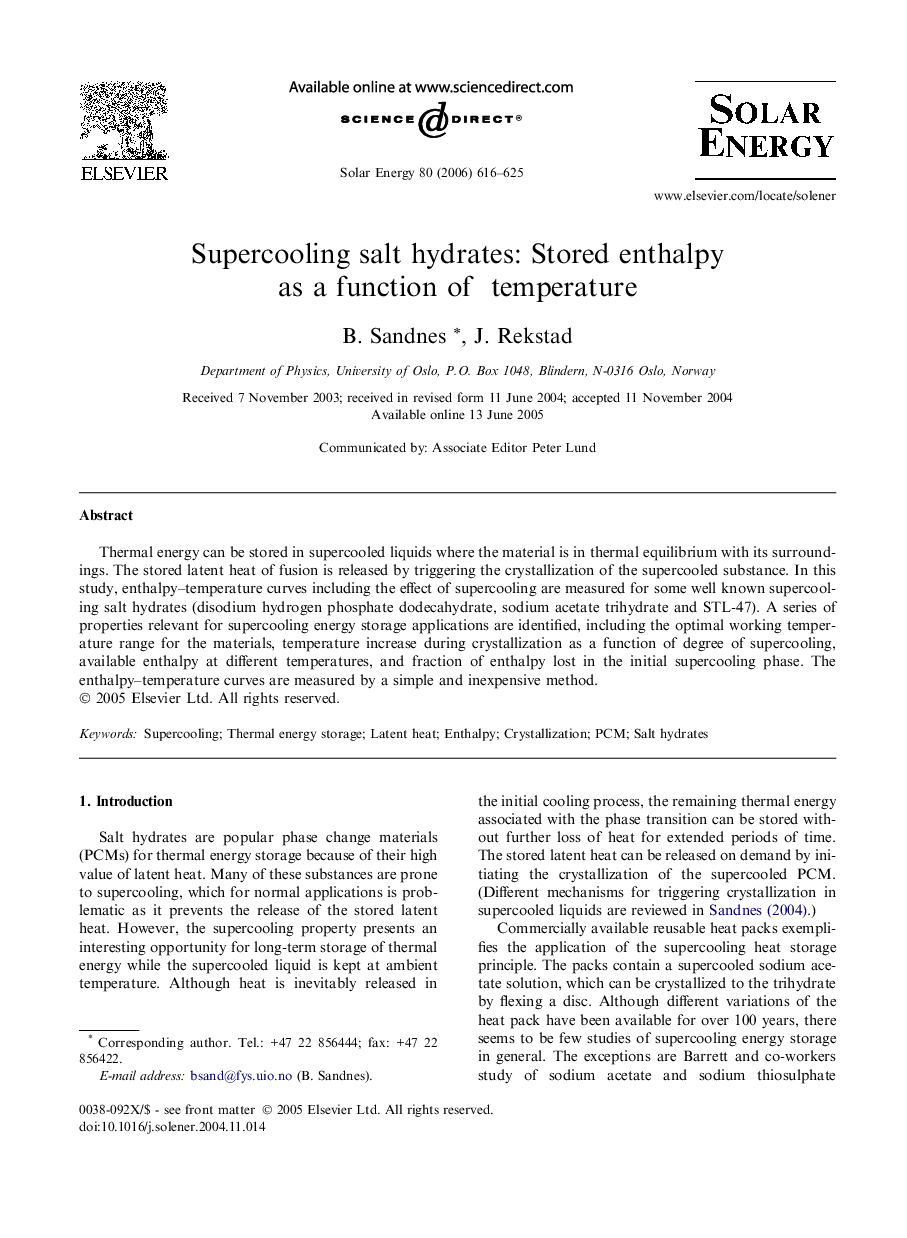| Article ID | Journal | Published Year | Pages | File Type |
|---|---|---|---|---|
| 1552379 | Solar Energy | 2006 | 10 Pages |
Thermal energy can be stored in supercooled liquids where the material is in thermal equilibrium with its surroundings. The stored latent heat of fusion is released by triggering the crystallization of the supercooled substance. In this study, enthalpy–temperature curves including the effect of supercooling are measured for some well known supercooling salt hydrates (disodium hydrogen phosphate dodecahydrate, sodium acetate trihydrate and STL-47). A series of properties relevant for supercooling energy storage applications are identified, including the optimal working temperature range for the materials, temperature increase during crystallization as a function of degree of supercooling, available enthalpy at different temperatures, and fraction of enthalpy lost in the initial supercooling phase. The enthalpy–temperature curves are measured by a simple and inexpensive method.
